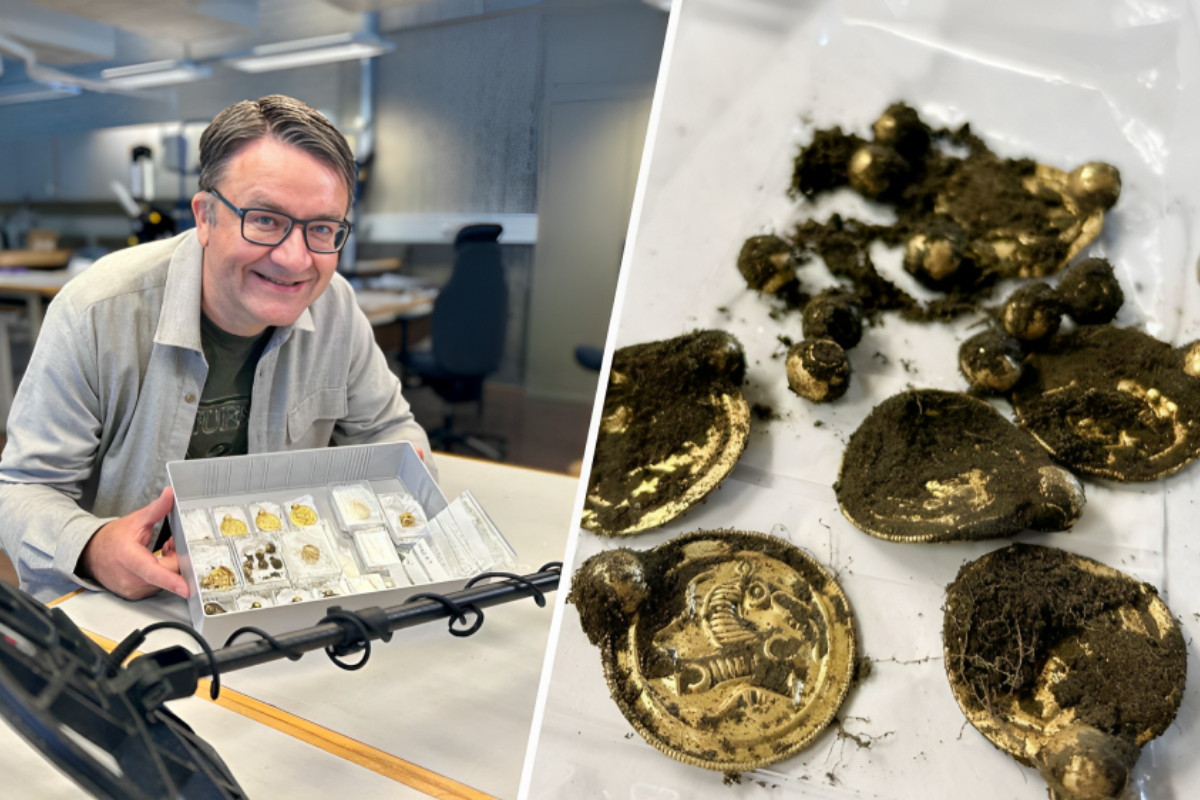A remarkable discovery unfolded on the southern island of Rennesoey, near Stavanger, Norway, where a 51-year-old man named Erlend Bore unearthed a trove of ancient treasures using his newly acquired metal detector. What initially seemed like a response to chocolate money buried in the soil turned out to be a spectacular find dating back 1,500 years.
Bore’s summer adventure on the island yielded nine pendants, three rings, and 10 gold pearls, believed to have been worn as lavish jewelry in ancient times. This remarkable discovery has garnered significant attention from archaeologists and historians.
According to Ole Madsen, director of the Archaeological Museum at the University of Stavanger, finding “so much gold at the same time is extremely unusual.” Bore’s find includes gold pendants known as bracteates, which are flat, thin, single-sided gold medals. These artifacts date back to around A.D. 500, during Norway’s Migration Period.
Notably, under Norwegian law, objects from before 1537 and coins older than 1650 are considered state property and must be reported.
The “showy necklace,” as described by experts, is believed to have been worn by individuals of high status during ancient times. It is a rare and significant discovery, with no similar find in Norway since the 19th century. Plans are underway to exhibit this treasure at the Archaeological Museum in Stavanger, shedding light on a fascinating piece of Scandinavian history.
[embedpost slug=”/teens-metal-detector-saves-beachfront-proposal/”]
To stay informed about current events, please like our Facebook page https://www.facebook.com/BOLUrduNews/.
Follow us on Twitter https://twitter.com/bolnewsurdu01 and stay updated with the latest news.
Subscribe to our YouTube channel https://bit.ly/3Tv8a3P to watch news from Pakistan and around the world.





















